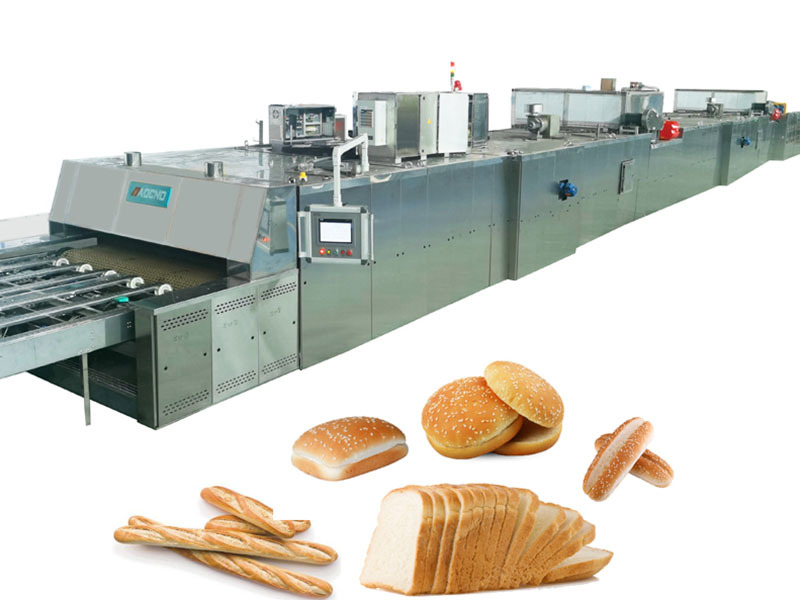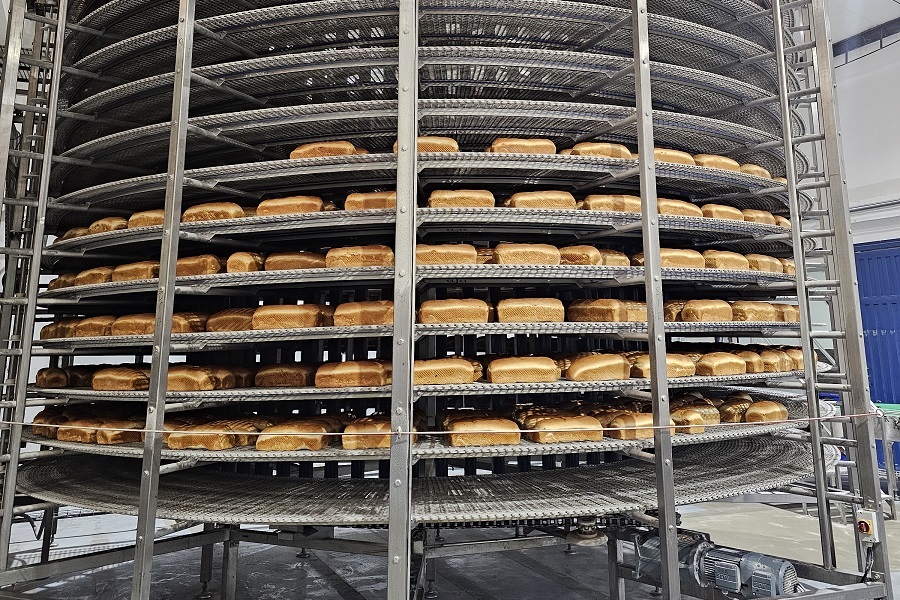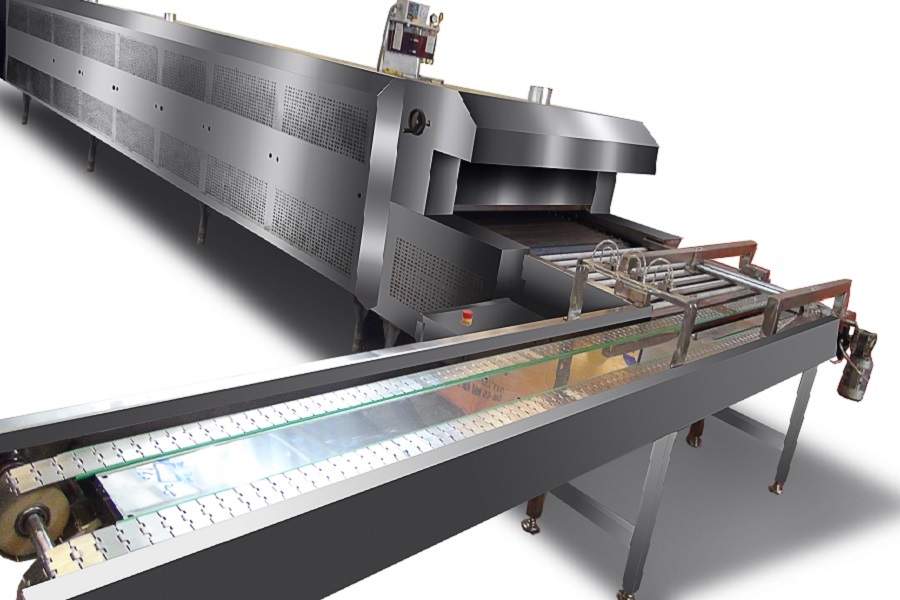Welcome To Know Our Products, We Can Offer You High Quality Products!
WhatsApp / WeChat : 008615127880005
Email : info@aocno.com
Optimizing Throughput: How Spiral Cooling Conveyors Revolutionize Production Lines
2025-06-23
1. Introduction to Spiral Cooling Conveyors
In the fast-paced world of manufacturing, efficiency and throughput are paramount. Spiral cooling conveyors have emerged as a revolutionary solution in production lines, specifically designed to optimize these metrics. These innovative systems not only enhance cooling processes but also revolutionize material handling, making them indispensable in various industries. In this article, we will delve into the intricacies of spiral cooling conveyors, exploring their benefits, applications, and operational mechanisms.
2. What Are Spiral Cooling Conveyors?
At their core, spiral cooling conveyors are specialized systems that utilize a spiral design to transport products while simultaneously cooling them. These conveyors consist of a continuous loop of flexible material that spirals around a central column. This unique configuration allows for increased surface area exposure, enabling efficient heat transfer and cooling of the products moving through the system.
The design of these conveyors maximizes space efficiency, making them ideal for facilities with limited floor space. Unlike traditional cooling methods, which may require bulky equipment, spiral cooling conveyors occupy a smaller footprint, allowing for more streamlined production processes.
3. Benefits of Spiral Cooling Conveyors in Production Lines
The implementation of spiral cooling conveyors in production lines comes with a multitude of advantages. Below, we will explore some of the most significant benefits that these systems offer.
3.1 Increased Throughput
One of the most compelling benefits of spiral cooling conveyors is their ability to increase throughput. By providing a continuous flow of product through the cooling process, these conveyors minimize downtime and ensure that production lines operate smoothly. Products can be processed at a faster rate, leading to higher output without compromising quality.
This enhancement in throughput is particularly critical in industries that rely on just-in-time production methods, where efficiency is essential for meeting customer demand.
3.2 Space Efficiency
The space efficiency of spiral cooling conveyors cannot be overstated. Their vertical design allows them to utilize overhead space, freeing up valuable floor space for other operations. This is especially beneficial in manufacturing facilities where floor space is at a premium.
By incorporating a spiral cooling conveyor, companies can optimize their production layout, ensuring that every square foot is utilized effectively to enhance operational performance.
3.3 Energy Savings
Another advantage of spiral cooling conveyors is their potential for energy savings. Unlike traditional cooling systems that may require significant energy input, spiral conveyors are designed to operate efficiently. Their continuous flow design allows for gradual cooling, which can reduce energy consumption significantly.
By optimizing cooling processes, companies can lower their operational costs while also contributing to sustainability initiatives, making spiral cooling conveyors an eco-friendly choice.
4. Applications of Spiral Cooling Conveyors
Spiral cooling conveyors are incredibly versatile and find applications across various industries. Some of the most notable include:
4.1 Food Processing
In the food processing industry, maintaining product quality and safety is paramount. Spiral cooling conveyors excel in cooling products such as baked goods, confections, and ready-to-eat meals. They prevent condensation and ensure uniform cooling, preserving the integrity of the food products.
4.2 Packaging Industry
The packaging industry leverages spiral cooling conveyors for cooling products before they are packaged. This ensures that the products are at the optimal temperature for packaging, reducing the risk of spoilage and maintaining quality during storage and transportation.
4.3 Pharmaceuticals
In pharmaceuticals, precise temperature control is critical. Spiral cooling conveyors are used to cool various products, including medications and vaccines, ensuring that they remain within required temperature ranges. This adherence to temperature control helps maintain efficacy and safety throughout the supply chain.
5. How Spiral Cooling Conveyors Work
Understanding how spiral cooling conveyors operate is essential for maximizing their benefits. The process begins when products are introduced to the conveyor system. As items enter the spiral, they are gently transported upward or downward, depending on the configuration of the conveyor.
During this transit, air is circulated around the products, facilitating heat transfer. The cooling medium—often cooled air or liquid—is introduced to enhance the cooling effect. The continuous nature of the spiral design ensures that products receive consistent cooling from all sides, resulting in uniform temperature reduction.
Moreover, advanced control systems allow operators to monitor and adjust the cooling parameters, ensuring optimal conditions for different products.
6. Choosing the Right Spiral Cooling Conveyor System
Selecting the appropriate spiral cooling conveyor system for your production line involves several considerations:
1. Product Type: The nature of the products being cooled is crucial. Consider factors such as size, shape, and temperature sensitivity.
2. Cooling Requirements: Determine the required cooling parameters, including temperature ranges and cooling time.
3. Space Constraints: Assess the available space in your facility to choose a system that fits without disrupting existing operations.
4. Scalability: Consider future production needs. Opt for a system that can accommodate potential growth and changes in production volume.
Engaging with a knowledgeable supplier can help you navigate these factors to ensure a successful implementation.
7. Common Challenges in Implementation
While spiral cooling conveyors offer numerous benefits, their implementation may come with challenges:
1. Initial Costs: The upfront investment for spiral cooling conveyor systems can be significant. Companies must weigh the long-term benefits against initial expenditures.
2. Integration with Existing Systems: Ensuring compatibility with existing production lines may require additional modifications.
3. Maintenance Requirements: Regular maintenance is essential to keep the system operating efficiently. Establishing a maintenance schedule can mitigate potential issues.
Addressing these challenges with careful planning and consultation with experts can lead to a successful implementation of spiral cooling conveyors.
8. FAQs About Spiral Cooling Conveyors
Q1: How do spiral cooling conveyors differ from traditional cooling systems?
A1: Spiral cooling conveyors utilize a continuous loop design to provide efficient heat transfer, while traditional cooling systems may require bulky equipment and longer cooling times.
Q2: What industries benefit most from spiral cooling conveyors?
A2: Industries such as food processing, packaging, and pharmaceuticals see significant benefits from spiral cooling conveyors due to their efficiency and temperature control capabilities.
Q3: Can spiral cooling conveyors be customized for specific products?
A3: Yes, spiral cooling conveyors can be tailored to accommodate various products based on their size, shape, and cooling requirements.
Q4: What maintenance is required for spiral cooling conveyors?
A4: Regular cleaning, inspection, and monitoring of mechanical components are essential for maintaining the efficiency and reliability of spiral cooling conveyors.
Q5: Are spiral cooling conveyors energy-efficient?
A5: Yes, these conveyors are designed for energy efficiency, often resulting in lower energy consumption compared to traditional cooling methods.
9. Conclusion
In conclusion, spiral cooling conveyors represent a significant advancement in production line technology. Their ability to optimize throughput while maintaining space efficiency and energy savings makes them a valuable asset for various industries. As businesses continue to prioritize efficiency and sustainability, integrating spiral cooling conveyors into production processes will undoubtedly revolutionize operations. By understanding their benefits, applications, and operational mechanics, companies can make informed decisions that enhance their overall productivity and effectiveness in the marketplace.
keywords:
RELEVANT INFORMATION
2025-08-02
The Ultimate Guide to Bread Making Machines: Elevate Your Baking Game
2025-07-28
Elevate Your Baking Game: Essential Oven Techniques for Bread Enthusiasts
2025-07-23











